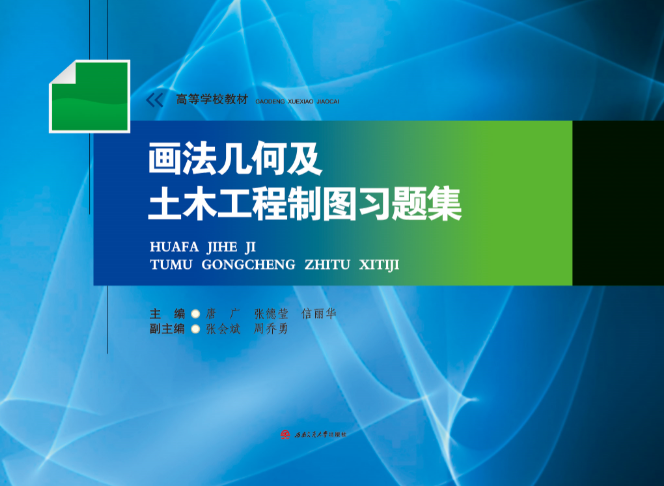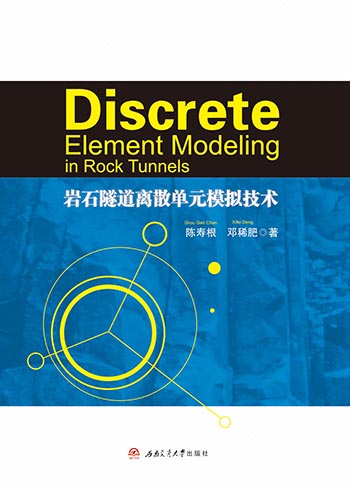-
 工程招投标实务与案例
工程招投标实务与案例作者:向铮 郭凤双
本教材通过大量的案例,系统而全面的介绍了建筑工程招标投标的理论、程序和操作实务。主要内容包括:建筑工程招标方式和招标范围,建筑工程招标投标程序,建筑工程评标办法,建筑工程招标文件,建筑工程投标策略,建筑工程投标文件,建筑工程开标、评标与定标,建筑工程合同及管理,建筑工程招标投标的监督、投诉与处理等。本书既可作为高等院校土建类、工程管理类专业教学用书,又可供企业中高层管理者、项目招标和投标负责人参考使用。
-
 画法几何及土木工程制图习题集
画法几何及土木工程制图习题集作者:唐 广 张德莹 信丽华
本习题集的内容编排与配套教材(唐广主编的《画法几何及土木工程制图》)基本一致,主要内容分为三大部分:第一部分为画法几何,内容包括投影的基本知识,点、线、面、体的投影,投影变换、轴测投影、标高投影和透视投影等,主要介绍图示理论和作图方法、培养空间想象能力和空间思维能力。;第二部分为制图基础,内容包括制图基本知识和技能、组合体、图样画法,主要介绍制图基本规定、土建形体的表达方法及读图方法;第三部分为土木建筑专业图,内容包括钢筋混凝土结构图、钢结构图、桥梁涵洞和隧道工程图,房屋施工图,主要介绍土建图的表达内容和特点,培养识读土建图的能力。
-
 隧道工程地质学
隧道工程地质学作者:何发亮
本书是专门工程地质学方面的教材,从隧道工程地质学的性质及任务、隧道工程地质学的发展出发,详细介绍了矿物、岩石、岩体、地层、内外动力地质作用及地质构造等与隧道工程岩体分级、隧道施工洞内地质灾害、隧道选线、隧道工程地质勘察相关的地质学基础知识、我国隧道工程地质灾害状况,论述了不良地质体及其与隧道施工洞内地质灾害的关系、隧道选线应注意的若干问题、隧道工程地质勘察及目前存在的若干问题、隧道工程岩体(围岩)分级及其急需解决的问题,以及隧道施工地质预报内容、技术方法、工作方法、当前存在的问题及其对策,系统总结了包括超前预加固、开挖方法、初期支护等在内的隧道通过不良地质体施工技术等隧道施工地质预报需要了解和掌握的基本知识,探讨了隧道工程地质工作和隧道风险评估与管理、存在的问题及其对策。
图书分类
Book classification- 本书正文为英文,是有关岩石隧道离散单元模拟技术的专业教材。本书在阐述了岩石力学和动力学特性的基础上,系统介绍了岩石隧道静动态问题(隧道开挖、波传播和爆炸荷载作用)的离散单元模拟技术。本书反映了岩石隧道离散单元模拟技术的最新研究成果,能较好地反映天然岩石的不连续特点(节理、层理和断层等),因而能取得更好的模拟效果。本书可以作为隧道与地下工程方向的研究生教材,以及准备出国深造的相关专业高年级教材。
- Natural rock masses often contain discontinuities such as rock interfaces, joints and faults. The presence of the discontinuities makes a rock mass a discontinuous, inhomogeneous and anisotropic mediu...查看更多
-
Chapter 1 Introduction 1
1.1 Rock and Its Mechanical Behavior 1
1.2 Dynamic Loading and Dynamic Behavior of Rock Masses 1
1.3 Numerical Modeling in Rock Engineering 3
1.4 Challeng...查看更多




